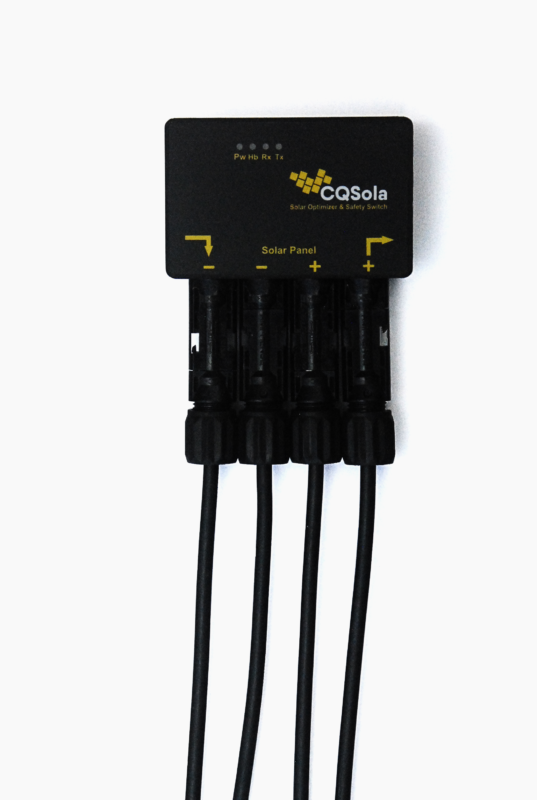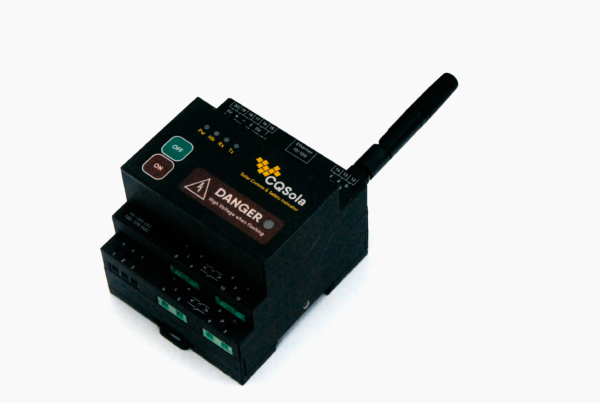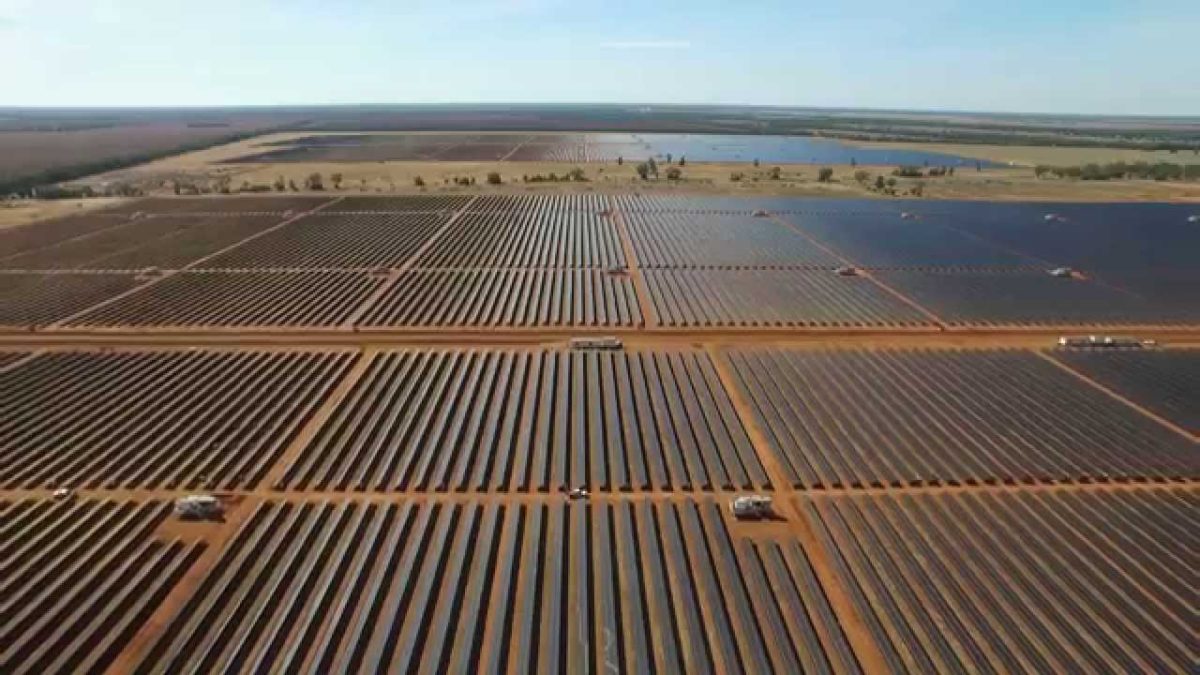“Solar panels are very badly behaved,” says Ian Schirmer, former Products and Services Innovation Manager at Ergon Energy, and now Executive Director of CQSola, his Brisbane startup that aims to inform how future solar farms can be more cost-effectively built, while making existing farms simpler and safer to operate and delivering 20-25% more energy than they currently do.
Random rates of panel ageing, hard-to-trace faulty wires, the tyrannical effects of just a little bit of shade — despite the rapidly ramping efficiency of solar cells, such solar PV challenges persist and are multiplied by the fact that a string of 20-40 solar panels wired in sequence and connected to an inverter will generally perform to the level of the string’s weakest link.
Schirmer says that a CQSola DC optimiser, plugged into every panel allows each to perform to its full capability, regardless of its neighbours’ problems, or of a tiny bit of shade cast over one or more panels.

Image: CQSola
“The real-world data that our modelling is based on indicates that, over the life of a solar farm, our optimisers can enable delivery of 20-25% extra power,” says Tony Schirmer, son of Ian, and CEO of CQSola, who brings to the venture his expertise in scaling up new enterprises.
The small device also collects encrypted data in a cloud-based system, that will allow solar-farm operators to identify any failing panels or broken wiring, such that they can easily claim on panel warranties, replace poor performers, and remediate fault points to increase production.
A first for solar farms
“As far as we know, it’s the first such device to be designed for solar farms,” Tony tells pv magazine.
The optimiser is rated up to 1500 Volts and incorporates a maximum power point tracker (MPPT) which measures the power point of the solar panel many times a second and regulates the maximum energy that can be drawn from any particular panel.
“Because we’re doing that at the panel level, you can remove the MPPT from the inverter, which saves almost 50% on the cost of the required inverter,” says Tony. “That adds up when you have to replace the inverter five or six times during the lifetime of the farm.”
CQSola’s product itself will come with a 25-year warranty, says Ian, who tells pv magazine he has worked for three years on engineering the device to ensure its longevity, developing special conductive silicon gel and plastic alloys to arrive at a durable plastic device waterproof to IP68 standard and with a SIL 2 safety rating.
“Because I’m from a utilities and mining product-development background in Australia, I’m switched on to what Australian utilities need, and I’ve made a utilities-grade design robust enough to operate under saltwater and with a very long life,” he says.
Safety and O&M flexibility
His device incorporates a comprehensive safety system which “checks for a circuit or load to go into”. If no circuit is detected, the optimiser disconnects. Its communications system also allows panels to be turned off if necessary.
One of the benefits of this on-off switch is that operations and maintenance teams, having identified faulty, low-performing, or prematurely ageing panels from the optimiser data, will be able to work on replacing them during daylight hours, without having to turn off the whole solar farm. This represents a saving in the cost of such maintenance, which is now usually carried out when the solar farm is not generating — at night, under lights, and at penalty rates.

Image: CQSola
Ian also asserts that having every panel operating as if in isolation will negate the need for expensive underground cabling on the majority of solar farms, since the shadow cast by overhead cables will only ever affect the performance of a few panels, for a short amount of time — without dragging down the performance of whole strings as is now the case.
The Schirmers believe that individual panel data will be invaluable for analysing how the components of a solar farm work in concert — and sometimes discordantly. “This is the first system,” says Ian, “that takes one-second samples of all the panel data, which will let us hook up artificial intelligence to find out what’s going on,” and how current performance of panels, trackers and solar-farm design could be improved upon.
Shines under intermittent cloud cover
The CQSola optimiser will deliver the greatest return on investment when applied to solar farms up to 10 years into their operation, and in areas prone to dusty or passing cloudy conditions.
“On a brand new solar farm that has all new panels and where there’s no dust and no clouds, our product may only add 3% to output, which would still be worth it over the life of the farm,” says Tony. Benefits rapidly accrue during warrantable periods, and then as panels deteriorate at different rates over time.
CQSola is currently field testing its technology, seeking solar-farm partners in Australia and overseas, and anticipates beginning commercial production of its product within two months.
In the first instance, the optimisers will be manufactured in Australia.
Says Ian, “It’s been years of work, late nights and sometimes pulling my hair out, but we’ve achieved the best product you can possibly build — a 1000 W power converter in a device no bigger than the palm of your hand, operating at 99.2 to 99.5% efficiency. It’s going to make a world of difference to the way we do solar.”
This content is protected by copyright and may not be reused. If you want to cooperate with us and would like to reuse some of our content, please contact: editors@pv-magazine.com.









This sells the device right here: “The small device also collects encrypted data in a cloud-based system, that will allow solar-farm operators to identify any failing panels or broken wiring, such that they can easily claim on panel warranties, replace poor performers, and remediate fault points to increase production.”
Imagine a 100,000, 200,000 or more solar PV farm and being able to pinpoint low output, or out right failure when and where down to the panel and conditioner attached to each panel. I imagine that solar PV farm designers allow a 10% more output build out to help keep the site reliable and robust. One could monitor the failed panel/converter pair until a 5% failure rate has occurred, then replace as O&M to remove the bad 5% and put the power generation back to 100%.